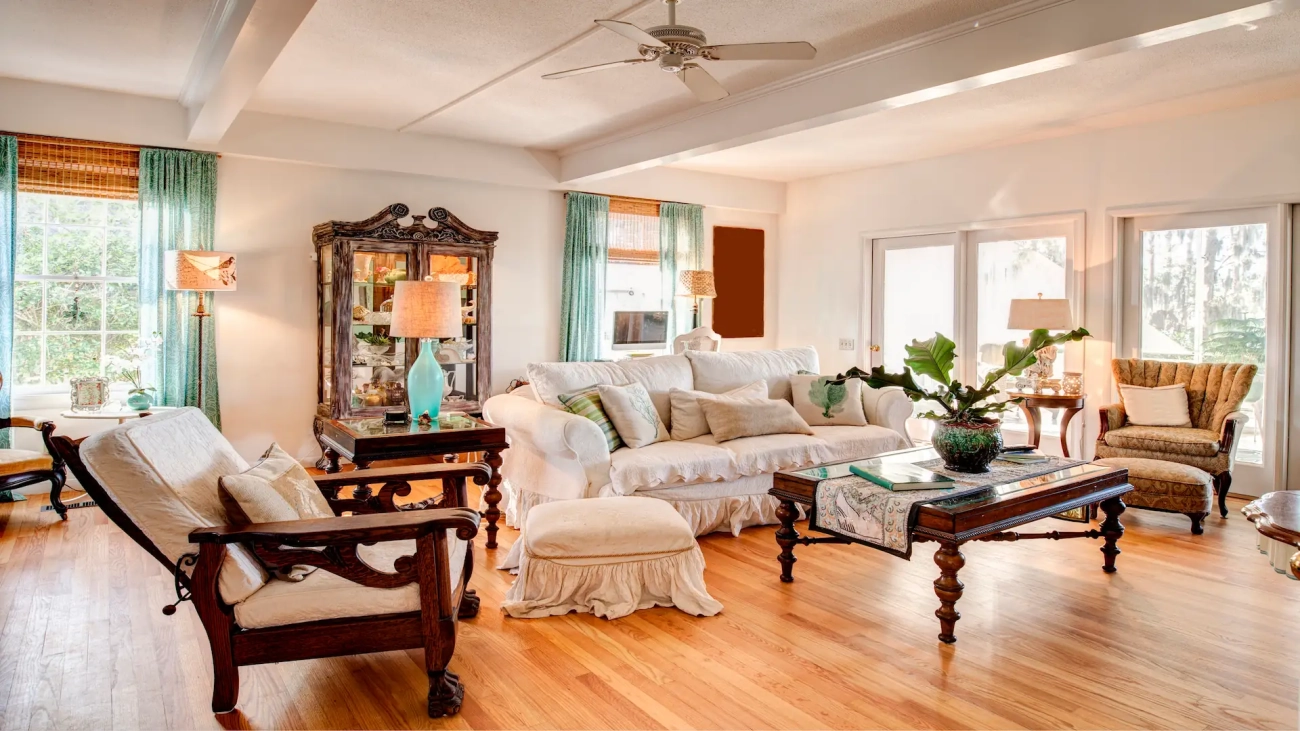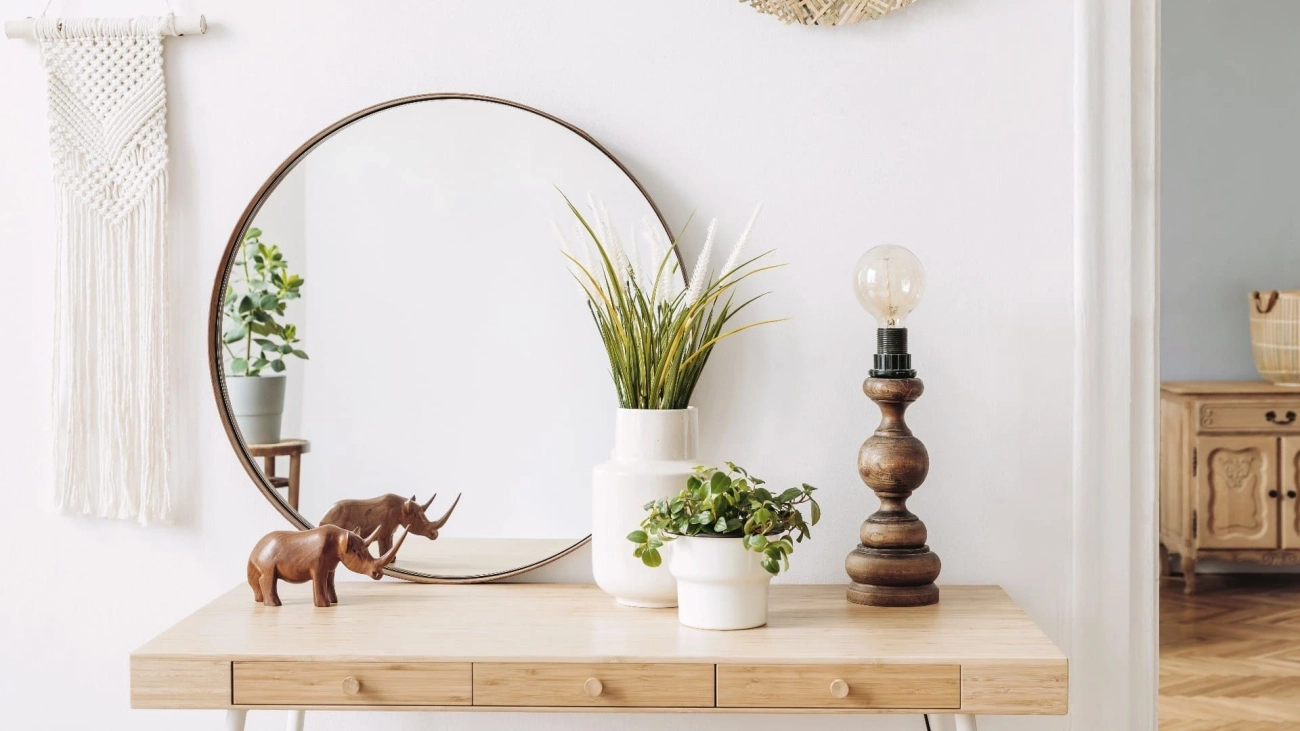Christmas decoration has evolved towards a more conscious and sensory style. This year, the trend focuses on creating warm, sustainable, and personalized environments where every corner of the home tells a story. It’s no longer about accumulating ornaments, but about transforming the space into a place of well-being and emotional connection.
How to Create a Cozy Atmosphere with Simple Decorations
You don’t need to overload your apartment to feel the Christmas spirit. The key is to combine natural materials, warm lighting, and sensory details that evoke emotions.
The “Organic Christmas” concept and the so-called “silent luxury” dominate trends for 2024-2025. Quality takes precedence over quantity: LED candles, soft textiles, and ornaments made from biodegradable materials like wood, linen, or ceramics are prioritized.
Lighting plays a crucial role. Choose warm LED lights (2200K to 3000K), which mimic the glow of fire and bring visual calm. Micro-LED garlands can be placed on shelves or window frames, replacing general lighting to create an enveloping atmosphere.
A current detail is Asian inspiration: washi or hanji paper lamps that filter light and cast soft shadows, perfect for adding serenity to small spaces.
In terms of color, burgundy, sapphire blue, copper, and pastels lead the color palette. Combined with gold or natural materials, they provide an elegant and cozy touch without being too overwhelming.
Ideas for Decorating Small Spaces During the Holidays
Living in an apartment doesn’t mean giving up the magic of Christmas. The urban trend focuses on decorating vertically and making the most of available surfaces.
Hang wreaths inside on mirrors or windows to double the visual effect. You can also create a “vegetal chandelier” suspended over the dining table with natural branches and ribbons, without occupying floor space.
Curtain rods are perfect allies: hang stars, glass balls, or small lights at different heights to achieve visual depth.
Shelves also transform with small touches: a green garland, an aromatic candle, or wooden figures nestled between books add charm without clutter.
For the tree, if space is limited, opt for a “slim” model or even wall-mounted trees made from branches, felt, or light garlands in a triangular shape. Another modern and light option is placing fir branches in a glass vase, evoking the Christmas symbol without overwhelming the space.
A stylist’s trick: place the tree in front of a mirror. The light multiplies, and the reflection visually expands the space, creating a sense of abundance without occupying more square meters.
If you have a balcony, decorate it with warm light garlands and green elements. In addition to connecting indoor and outdoor spaces, it provides visual continuity and a sense of spaciousness.
Step-by-Step Guide to Decorating Your Christmas Tree
The tree is the centerpiece of the decoration, and doing it right requires following a logical order:
- Choose a quality base. Artificial trees with Real Touch technology offer impressive realism and last for years. Before decorating, take time to open and shape the branches to achieve volume and natural appearance.
- Start with the lighting. Distribute the lights from the inside out to create depth and even brightness. Plan for about 100 lights per 30-40 cm of tree height.
- Add garlands or ribbons. Velvet or burlap ribbons in natural or pastel tones are placed in cascading or loose loops, adding texture and movement.
- Distribute the ornaments in layers. Place the largest ornaments inside, medium ones in clusters, and small or glass ornaments at the tips to reflect the light. This balance creates a harmonious and professional-looking tree.
- Hide the base. Avoid visible tree stands. Cover them with a rattan basket, a wooden box, or a thick blanket. This way, the entire tree will look warm and well-finished.
This year, personalized trees are trending, mixing purchased ornaments with handmade details or family keepsakes. This trend turns the tree into an emotional reflection of the person decorating it.
Christmas Accessories That Make a Difference in Your Home
Beyond the living room, Christmas accessories can transform bedrooms, hallways, or kitchens. Textiles are the easiest way to do this: velvet cushions, faux fur throws, or plaid designs instantly bring warmth.
The return of tartan or plaid brings back classic nostalgia. It fits perfectly on blankets, table runners, or bows, and pairs well with the rise of vintage style, which revives blown glass ornaments and antique tableware, combining them with modern touches.
For the table, opt for a low natural centerpiece: an eucalyptus and pine cone garland, accompanied by candles or pomegranates, will run along the table without obstructing conversation. Complete the look with handmade ceramic tableware and velvet ribbon napkin rings.
Don’t forget safety: all lights should have the CE marking, outdoor lights should have an IP44 rating, and traditional candles can be replaced with LED wax candles. This way, you avoid electrical risks or fires and comply with your community’s rules.
This year’s Christmas decoration moves away from ostentation and embraces emotionality. Opt for natural materials, warm light, and sophisticated colors to create an authentic and cozy atmosphere. Whether it’s a small apartment or a larger space, the key is to reflect your personal style and enjoy the process.
Book Now on BizTrip








